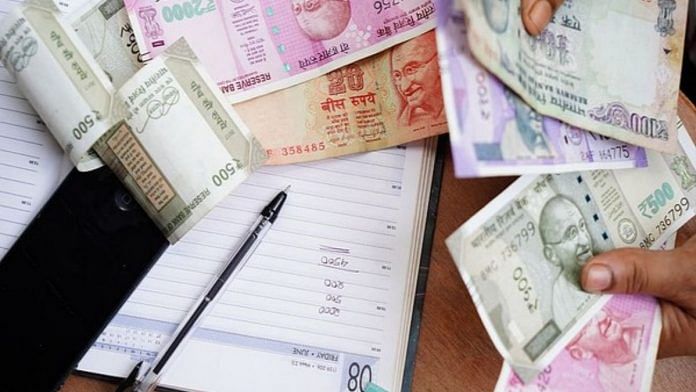The Reserve Bank of India recently banned Mahindra Finance from the use of third-party recovery agents after the death of a borrower in Jharkhand. The incident and the diktat raise key questions surrounding the regulation of loan recovery and challenges of the credit industry.
Delayed payments and defaults are part and parcel of lending. No matter how good the credit evaluation process, out of every 100 loans, some will always go bad. It is in the lender’s interest to collect as much as possible because losing money on loans implies that the business of lending can become unviable. Coercive collection practices are, therefore, a challenge for regulators of credit markets across the world, and in India.
It is no surprise that the RBI had to take some action in response to what it saw on the ground. In the past too, the RBI has been responsive to these challenges and has stepped in when recovery agents of lenders have misbehaved with borrowers. However, it is worth pondering if a more proportionate response would have been to impose a penalty instead of a complete ban on deploying third-party recovery agents. This is what it chose to do in the case of Bajaj Finance in 2021, after giving it a show-cause notice and an opportunity to defend itself.
A complete ban is justified if the problem is systemic, that is, if a large proportion of the third-party staff is found to engage in poor loan recovery practices. But the current action is similar to that of the Andhra Pradesh government, which effectively banned micro-finance in the state in 2010 in response to alleged coercive actions by a few. This proved to be expensive to the very borrowers that the ban sought to protect. In this case also, by forcing an organisation to keep staff on payroll, we run the risk that lenders may increasingly find it expensive to operate in riskier markets, thereby hampering our goals of increased financial inclusion.
Also read: Giving up on NPS a tragedy for state govts. DB pensions are ad hoc, delay fiscal stress
The challenging landscape of retail credit
First, the credit landscape becomes challenging in markets where the cost of capital for lenders is high. Second, macroeconomic circumstances make it difficult for lenders to raise money and for debtors to repay. Third, lenders have to deal with a cash economy. Fourth, legal frameworks to deal with recovery and insolvency are weak.
India is a combination of all of the above factors. Non-Banking Finance Companies (NBFCs) typically lend to customers that banks find risky, and have a higher cost of funds. Unlike banks, they cannot raise deposits. After the Infrastructure Leasing & Financial Services (IL&FS) and Dewan Housing Finance Corporation Limited (DHFL) crisis, mutual funds that were a source of funding for NBFCs became cautious, raising borrowing costs further. The current macroeconomic uncertainty on account of high inflation worldwide, and the war in Ukraine could not have helped with funding costs. There was a spike in Non-Performing Assets (NPAs) during the Covid-19 pandemic, and several debtors are probably still reeling under the aftermath of repeated lockdowns, thus impacting NBFC balance sheets. In cash economies, lenders have to hire professionals who can actually be on the ground and physically collect money from the debtor. Lenders perhaps find it economical to hire third-party agents to do the collections instead of having staff on their payroll. While it is possible for debtors and lenders to restructure loans, the legal framework to facilitate such interactions appears weak.
In addition to these challenges, the RBI has been trying to regulate the larger NBFCs just like it regulates banks on account of concerns over financial stability. For example, the new RBI norms requiring NBFCs to recognise NPAs on a daily due date vs the month-end practice are expected to increase provisioning requirements starting 1 October 2022. But the more it treats larger NBFCs like banks, without giving them a banking license, the more squeezed the NBFCs are going to become. At an extreme, lenders may decide to fully withdraw from markets where the cost of collection makes it uneconomical to lend. And here lies the challenge of financial inclusion, financial stability and debt recovery.
Also read: India’s financial sector sees no point in addressing consumer grievances. Here’s how to fix it
Regulating credit
There is no question that coercive collection practices are unacceptable. Two approaches can prove helpful. First, regulations on coercive collection need to outline the penalties for specific individuals or firms that are found guilty. Only if bad behaviour is systemic should outright bans be deployed. If a ban is seen as the appropriate tool, then it should be part of the regulations so that lenders are aware of the kind of regulatory action they can expect.
Second, we need to find mechanisms that make restructuring more feasible than they currently are. Previous efforts by the RBI in setting up restructuring programmes resulted in the evergreening of loans. This has perhaps made the regulator cautious about designing more such schemes. However, informal restructuring must happen frequently. For instance, how can the right incentive structures be set so that we can buy debtors more time to make their repayments, and for lenders to refrain from indulging in evergreening or making large provisions on loans in the process of being restructured?
The NBFC sector plays an important role in taking finance to those customers whom banks are not willing to serve. The challenges in loan recovery need to be seen in light of overall stress in the sector and the economy. This will help design policy measures that can take us forward on the path of financial inclusion.
The author is an associate professor at the National Institute of Public Finance and Policy (NIPFP). She tweets @resanering. Views are personal.
(Edited by Zoya Bhatti)



